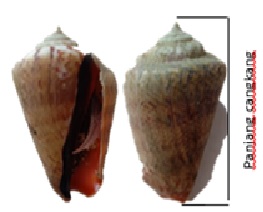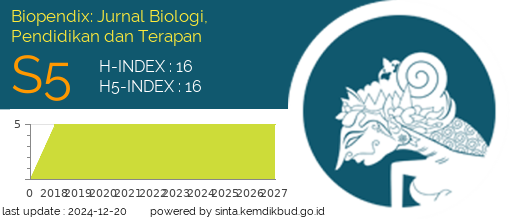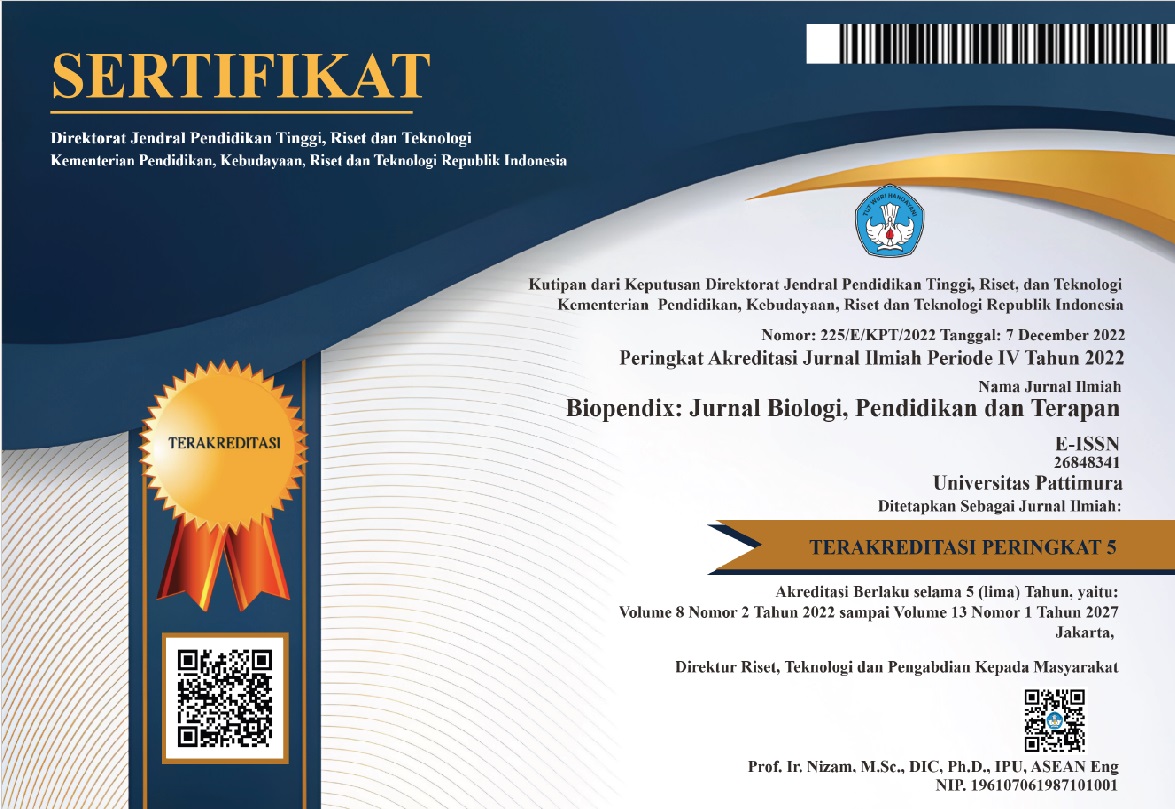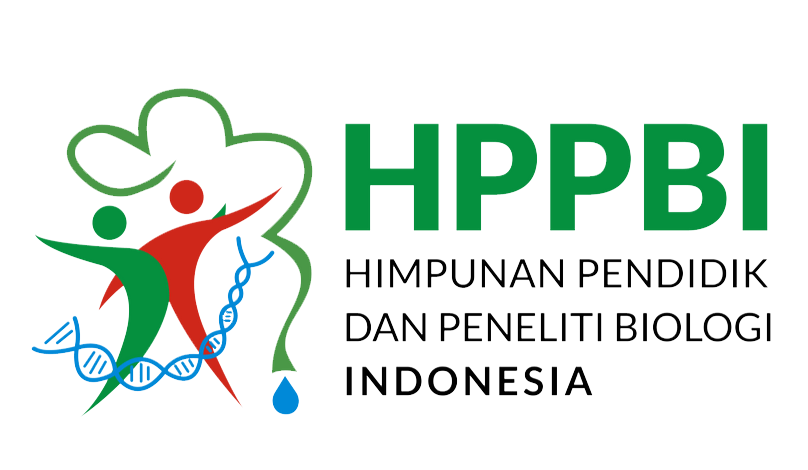POLA PERTUMBUHAN Strombus luhuanus Linn. 1758 DI PERAIRAN PANTAI DESA OMA PULAU HARUKU KABUPATEN MALUKU TENGAH (KAJIAN MONITORING)
Abstract
Introduction: Growth is a very important event in the life history of an organism besides reproduction. Strombus luhuanus Linn. 1756, is a type of gastropod that lives in coastal waters and is usually associated with seagrasses. Utilization of S luhuanus for consumption as a source of animal protein, the growth of this animal is a concern for environmental observers to maintain the sustainability of this animal
Methods: After obtaining the length and weight measurements of S luhuanus, the growth pattern was analyzed using the formula: W = aLb
Results: The results of the analysis of the growth pattern (pattern of relationship between length and weight) of S. luhuanus showed that the growth pattern in the coastal waters of Oma Village, Haruku Island, based on total length, followed the equation W = 0.0046L2.0714. Based on the results of the growth pattern analysis, the W equation shows a b value of 2.0714 and a coefficient of determination (R2) of 0.686 which indicates that the growth in shell length is more dominant than the total weight gain or negative allometric.
Conclusion: Based on the results of the analysis of the growth pattern of S luhuanus, the conclusion that can be drawn is that the growth in shell length is more dominant than the total weight gain or the growth pattern of S luhuanus in the coastal waters of the village of Oma Pulau Haruku is negative allometric.
Downloads

Authors who publish with this Journal agree to the following terms:
- Author retain copyright and grant the journal right of first publication with the work simultaneously licensed under a creative commons attribution license that allow others to share the work within an acknowledgement of the work’s authorship and initial publication of this journal.
- Authors are able to enter into separate, additional contractual arrangement for the non-exclusive distribution of the journal’s published version of the work (e.g. acknowledgement of its initial publication in this journal).
- Authors are permitted and encouraged to post their work online (e.g. in institutional repositories or on their websites) prior to and during the submission process, as it can lead to productive exchanges, as well as earlier and greater citation of published works




 2
2






